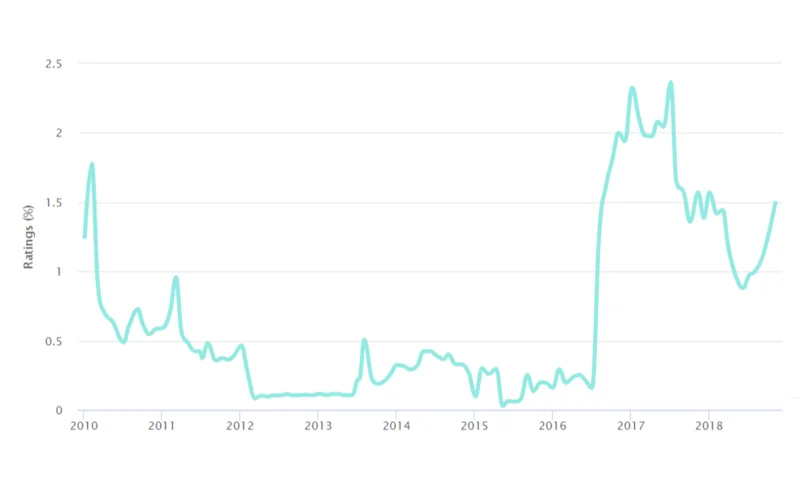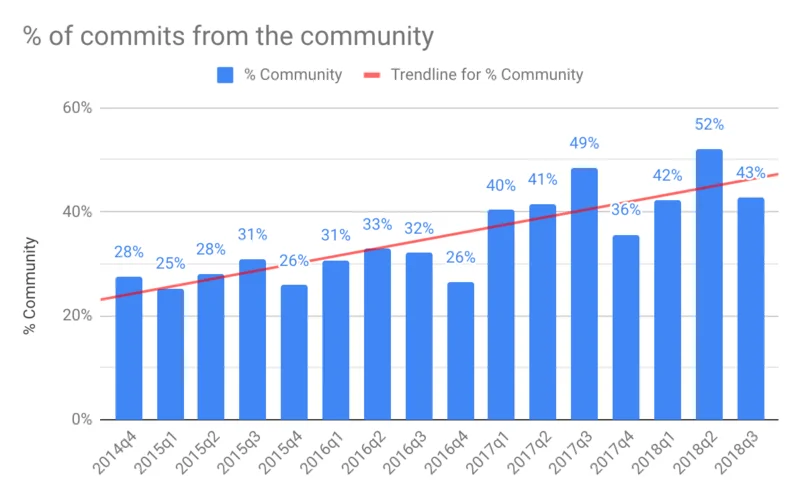If you’re planning to create or streamline an app for your business, start by choosing the proper technology. In a world of speedy changes, business owners often resort to Ruby as it allows them to create an app truly fast. But why use Golang? Developers often claim that Go is perfect for building projects with high security, high speed, and high modularity, for example in the FinTech industry. Moreover, with this language, your developers don’t need to build up a tower of Python, Bundler, WSGI, Redis, and other technologies. All the necessary tools are within Go itself. In this post, we take a closer look at what Go is, its pros and cons, and when to use Go (what projects can benefit from this programming language).
What is Go?
Go, or Golang, is an open-source programming language. It’s statically typed and produces compiled machine code binaries. Developers say that Google’s Go language is the C for the twenty-first century when it comes to syntax. However, this new programming language includes tooling that allows you to safely use memory, manage objects, collect garbage, and provide static (or strict) typing along with concurrency.
The world was first introduced to Go in 2009 thanks to Google’s Rob Pike, Robert Griesemer, and Ken Thompson. The main goal of creating Go was to combine the best features of other programming languages:
- Ease of use together with state-of-the-art productivity
- High-level efficiency along with static typing
- Advanced performance for networking and the full use of multi-core power
What are the advantages of using Go for your project?
Why Go language is popular? Besides the cute mascot, Go brings a whole set of advantages. The language began rising almost as soon as it was released back in 2009. It quickly started drifting from the #65 language toward the top positions around the world. Then Business Insider called Go the hottest programming language of 2016. According to the TIOBE index, Go’s rating went way up and a bit down in 2017, but in 2018 it has continuously gone up as shown in the graph below.

You might want to know why Go is rising. The reason is that Go has the same performance as C and is much easier to maintain than Java, as we need no virtual machine, no warming up period, no JAR hell, and so on. Let’s have a look at the other Golang advantages.
Spend less time and money to develop an app
You don’t need a huge tech stack if you’re using Go for your project. Apps created in Go actually compile to native machine code and don’t need any interpreter or virtual machine. This also means that Go apps will work faster and won’t require the warming up we’ve just mentioned.
Use Go for a range of apps
Go is a really flexible language, able to solve a lot of problems. You can use it for system and network programming, big data, machine learning, audio and video editing, and more.
Get more performance and a wider audience for your app
Similarly to C or C++, Go is a compiled language and doesn’t require any interpretation. Correspondingly, the absence of an interpreter frees up power and gives a Go-built app way more performance, which will surely be appreciated by users. Moreover, Go knows how to properly manage allocated memory.
More good news is that a Go-based app is less demanding in terms of system requirements. This is good for users with older devices, as they’ll get to enjoy your app too. And with more people using your app, you’ll be getting more money.
Worry less about the app crashing
Go was created to use the full potential of multiple cores. Moreover, the language can properly use all the processor resources, so it’s perfect for running an app in the background as a single process. This is possible thanks to goroutines, which are used instead of threads and require much less RAM due to their non-system thread nature. This is why the risk of a Go app crashing due to lack of memory is lower.
Easily find Go developers for your project
Go is blowing up. If you look at the 2018 developer survey by Stack Overflow, you’ll see that Go is one of the top five most loved and most wanted languages. More and more professionals are diving into the world of Go. According to recent research, you can already find over 1,633,000 Go developers on the market in 2018, which is a 60% increase compared to 2017. According to the Go blog, more and more contributors to Go are coming from the Go community, which also means that there are more and more people becoming Go professionals.

You can expect to find even more experts to develop and maintain your Go-based app in the coming years.
Developers can easily support Go apps
There’s a serious advantage for those who aren’t ready to hire a Go expert for support and maintenance! Go code has clear and neat syntax and requires little effort to learn, so the developers you already work with can learn all they need to within just a couple of days. This will allow your developers to support your existing app. Moreover, Go developers have quite a number of online courses available and lots of tools to work with:
- Automatic documentation. GoDoc automatically generates documentation from Go code. With GoDoc, you get structured and formatted technical documentation that includes cool features such as cross-referencing, code examples, and even links to the version control repository.
- Static code analysis. GoMetaLinter is a metatool that helps developers analyze their code quickly and in detail. It saves a lot of time and allows you to create your own LR parsers for better analysis.
- Embedded testing environment. Go provides developers with a simple API that you can use for testing, profiling, and even adding your own code samples. You can easily start testing, run parallel tests, skip tests, and do much more.
- Race condition detection. Race conditions can be an issue when creating multi-threaded applications because some processes that compete with each other can be completed in an unexpected order. This can cause a lot of errors that are quite difficult to discover. For that reason, the creators of Go built a Race Detector to get rid of all race condition issues in a timely matter as well as to provide backward compatibility.
As you can see, there are a whole lot of advantages that Go brings to business owners and developers. This is one of the reasons why the language has become one of the most popular. And this is most definitely why Go has become crucial for companies around the world, including Hootsuite, 500px, OPPO, and Intercom. However, Go isn’t a perfect language (though Google is working hard to make it so). You should consider the drawbacks of Go before you decide to use it for your project.
What are the disadvantages of using Go?
Reading so much about the advantages of Go for your projects, you might ask why everybody isn’t using it yet. Well, when development speed and the graphical user interface are the top priorities for business owners, they often choose Ruby. Why?
The creators of Go wanted to make it similar to C to simplify the implementation. And they did it! Moreover, Go became a pretty good choice for single-page apps, providing all the basic UI elements. However, Go doesn’t have it’s own GUI library. For you and your developers, this means quite a lot of time and knowledge are required to connect a library to your app instead of using some kind of native solution as with, say, Python or Java.
What projects should you use Go for?
Go will definitely do the trick if you’re planning to develop the underlying services for your app. More than that, Go is good for scalable high-performance apps. Below, we list some apps and services that are enjoying the benefits of Go to the max.
Cloud services
As the creator of Go, Google is using this language to provide cloud infrastructure: it offers top performance and scalability to the Google Cloud Platform. But there are even more well-known cloud businesses out there using Go for the same reasons: Dropbox, Terraform, Kubernetes, and Docker.
Media platforms
YouTube, SoundCloud, and Netflix chose Go to fight with high loads on their sites. SoundCloud uses this language for deploying some internal services within their complex projects.
News outlets
Back in 2012, the BBC (yep, it was a surprise to us too) started using Go for backend development and some of the elements of their internal analytics services.
On-demand services
The taxi giant Uber was looking to improve map processing speeds as people loaded geofence lookups, sending literally thousands of queries per second. Go helped Uber significantly reduce the timing of providing services to users, which was much appreciated by users.
Aside from the services and products, Go provides good tooling for mobile app development. This is why we’ll soon see even more examples of Go in mobile apps and probably in some other industries as well.
Although Go is still a relatively young programming language, it has gained popularity among real business monsters like Google, Netflix, Uber, and others who use Go to scale their products and achieve high performance. Go is quickly changing for the best, providing more and more tools for mobile and web development and remarkably decreasing the time and costs of app development and support.
Rate this article
5/5.0
based on 1,671 reviews






